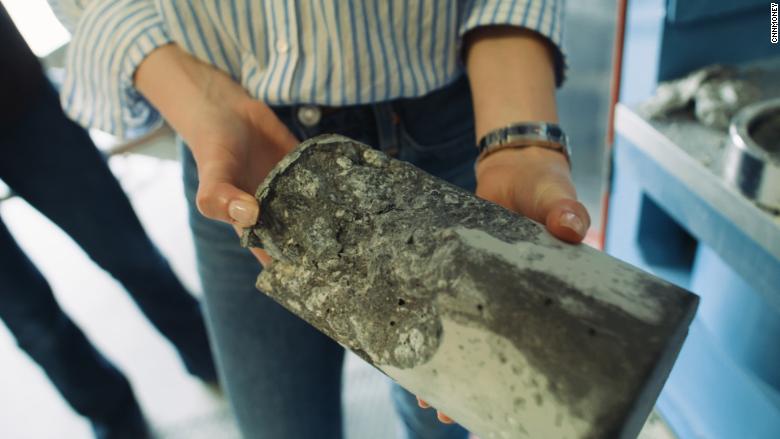This concrete (yes, concrete) is going high-tech
Concrete is the most abundant man-made material on earth. There's a good chance you're standing on it right now, and it's holding up the buildings around you.
But concrete has an emissions problem. Its essential ingredient, cement, has a huge carbon footprint.
Cement is the glue that makes concrete strong, but the process of making cement requires superheating calcium carbonate, or limestone, and releases massive amounts of carbon dioxide into the atmosphere.
Cement is responsible for 7% of global man-made greenhouse emissions, making it the world's second largest industrial source of carbon dioxide, according to the International Energy Agency. Data from the United States Geological Survey -- the scientific agency of the US government -- reveals that global cement production was responsible for about 4 billion pounds of CO2 emissions in 2017 alone.
But a Canadian startup has invented a new system for making concrete that traps CO2 emissions forever and at the same time reduces the need for cement.
CarbonCure's system takes captured CO2 and injects it into concrete as it's being mixed. Once the concrete hardens, that carbon is sequestered forever. Even if the building is torn down, the carbon stays put. That's because it reacts with the concrete and becomes a mineral.

"The best thing about it is the mineral itself improves the compressive strength of the concrete," Christie Gamble, the director of sustainability at CarbonCure, told CNNMoney.
"Because the CO2 actually helps to make the concrete stronger, concrete producers can still make concrete as strong as they need to but use less cement in the process."
And using less cement is how producers can really reduce emissions.
Atlanta-based Thomas Concrete, a concrete producer, has been using CarbonCure's system since 2016. Thomas Concrete says it has since prevented 10 million pounds of CO2 emissions.
Justin Lazenby, a manager of technical operations at Thomas Concrete, said the move toward greener tech is a long-term decision the concrete industry should embrace.

"The industry as a whole has always kind of looked at trying to solve today's problems with yesterday's technology, which doesn't really work," he said.
Thomas Concrete pays to use CarbonCure and buys captured CO2 from a fertilizer plant where it's emitted, but the company says those costs even out with what they save by using less cement.
"We understand that to make environment impact, you have to make business sense," Gamble said.
CarbonCure's technology utilizes CO2 that would otherwise be a waste product from factories. Finding uses for captured CO2 is an economically-friendly way of incentivizing companies to capture their emissions.
"We're leading that movement right now [by] showing it is possible to take CO2 and turn it into something that makes financial sense," Gamble said. "This concept of beneficial reuse of CO2 is expected to be a one trillion dollar industry by the year 2030."
A new mixed-use development in one of Atlanta's trendiest neighborhoods, called 725 Ponce, is a real-life example of the impact of building with greener concrete. When it opens in 2019, it will become the largest structure ever made with CarbonCure concrete.
No comments:
Post a Comment